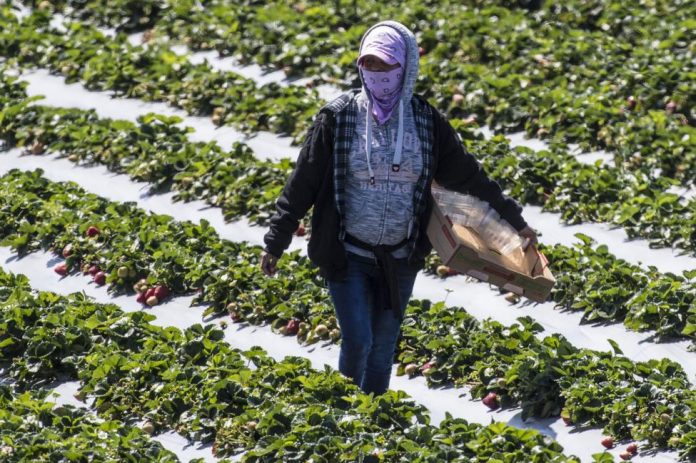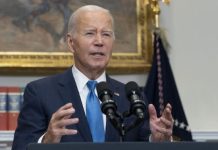
May 6 (UPI) — The COVID-19 pandemic has cut a path of destruction in urban centers throughout the northeastern United States, but experts worry that the next outbreak hot spots could impact rural areas more because of reduced access to healthcare.
Experts said Tuesday they are concerned about the southeastern United States — Georgia and Tennessee, in particular — and spotlighted the emerging crisis in the Navajo nation in the Southwest as an example of the potential problem.
The reservation, which covers parts of Arizona, Utah and New Mexico, has reported more than 2,300 confirmed cases of the virus despite having an overall population of a little over 350,000.
At 46 deaths attributed to the virus per 100,000 people, the mortality rate for the disease among tribal members is higher than anywhere in the country outside of New York, New Jersey, Connecticut and Massachusetts, according to figures from the Navajo Department of Health.
“Some of the states where we’re seeing dramatic increase in rural cases are the same places we’re seeing loosening social distancing restrictions,” Dr. Carrie Henning-Smith, a professor and researcher at the University of Minnesota School of Public Health, said Tuesday during a conference call with reporters.
To date, nearly 1.2 million Americans have been diagnosed with COVID-19, according to the latest figures from Johns Hopkins University.
Although all 50 U.S. states have reported at least a few hundred cases, more than 30 percent of the people diagnosed so far live in the New York City metropolitan area, which includes parts of New Jersey and Connecticut — but that might be starting to change, Henning-Smith said.
While the number of new cases in the country’s largest city and surrounding areas appears to be dropping, new outbreaks are emerging in other parts of the country, where many live in poverty and access to healthcare services is limited.
A report last month, published by the U.S. Centers for Disease Control and Prevention, highlighted areas of the country with surging case numbers, with Iowa and North and South Dakota among them.
Since that report, Iowa has reported more than 10,000 confirmed cases. Hundreds of those afflicted work in meat-processing plants located throughout the state.
Dougherty County, which is in southwestern Georgia, an area where Henning-Smith and her University of Minnesota colleagues have done a lot of research work, has reported more than 1,500 cases.
Many of the residents in these regions are more vulnerable to the new coronavirus. For example, high percentages of them live in poverty — the South is the U.S. region with the highest poverty rate, at 13 percent, according to the U.S. Census Bureau — and might not be able to afford COVID-19 treatment.
And, although 8.5 percent of Americans nationwide don’t have health insurance, the percentages are much higher in several predominantly rural states. This includes Texas, at 18 percent; Oklahoma, 14 percent, and Georgia, 14 percent, the U.S. Census Bureau reported.
“In general, the differences between rural areas and urban areas are important and they’re beginning to emerge now,” William Hanage, an associate professor of epidemiology at Harvard T.H. Chan School of Public Health, said during a conference call last week.
“I have concerns about rural areas because as we are now beginning to see, once the virus gets in there, it can quite rapidly spread. And some of the smaller towns are being hit really hard,” Hanage said.
The states with the highest rates of heart disease and diabetes — such as Alabama, Indiana, Kentucky, Louisiana, Mississippi, Oklahoma, Tennessee and West Virginia — also are primarily rural. People with heart disease and diabetes appear to be at increased risk for serious illness with COVID-19.
Shortages of hospital beds, personal protective equipment and medical personnel in urban centers have been well-documented, but these issues are arguably even more acute in rural areas, Henning-Smith said.
Rural areas across the United States have seen 170 hospitals close since 2005, 128 since 2010 and eight in 2020, according to figures from the Cecil G. Sheps Center for Health Services Research at the University of North Carolina.
The COVID-19 outbreak was a factor in at least three of hospital closures this year, according to Henning-Smith, with the disease taxing their already limited resources.
With lower budgets than larger counterparts in cities, many of these hospitals face challenges in acquiring personal protective equipment, or PPE, and vital devices like ventilators, as they have found themselves engaged in bidding wars for these products.
“By themselves, many rural hospitals don’t have the buying power to get ahead in line or get a good price for the PPE and the other equipment they need,” Henning-Smith said.
While outbreaks in large cities generate more headlines, because of the greater numbers of people at risk in densely populated areas, she said, COVID-19 crises in more rural areas warrant just as much attention because of the unique public health challenges they pose.
As Hanage noted, “a pandemic is so-called because it has the capacity to infect everywhere,” not just large population centers.
“Rural areas make up the vast majority of the land mass in the United States,” Henning-Smith said. “We need to stabilize funding for rural hospitals and providers to ensure they have enough testing available and enough of the equipment they need.”





